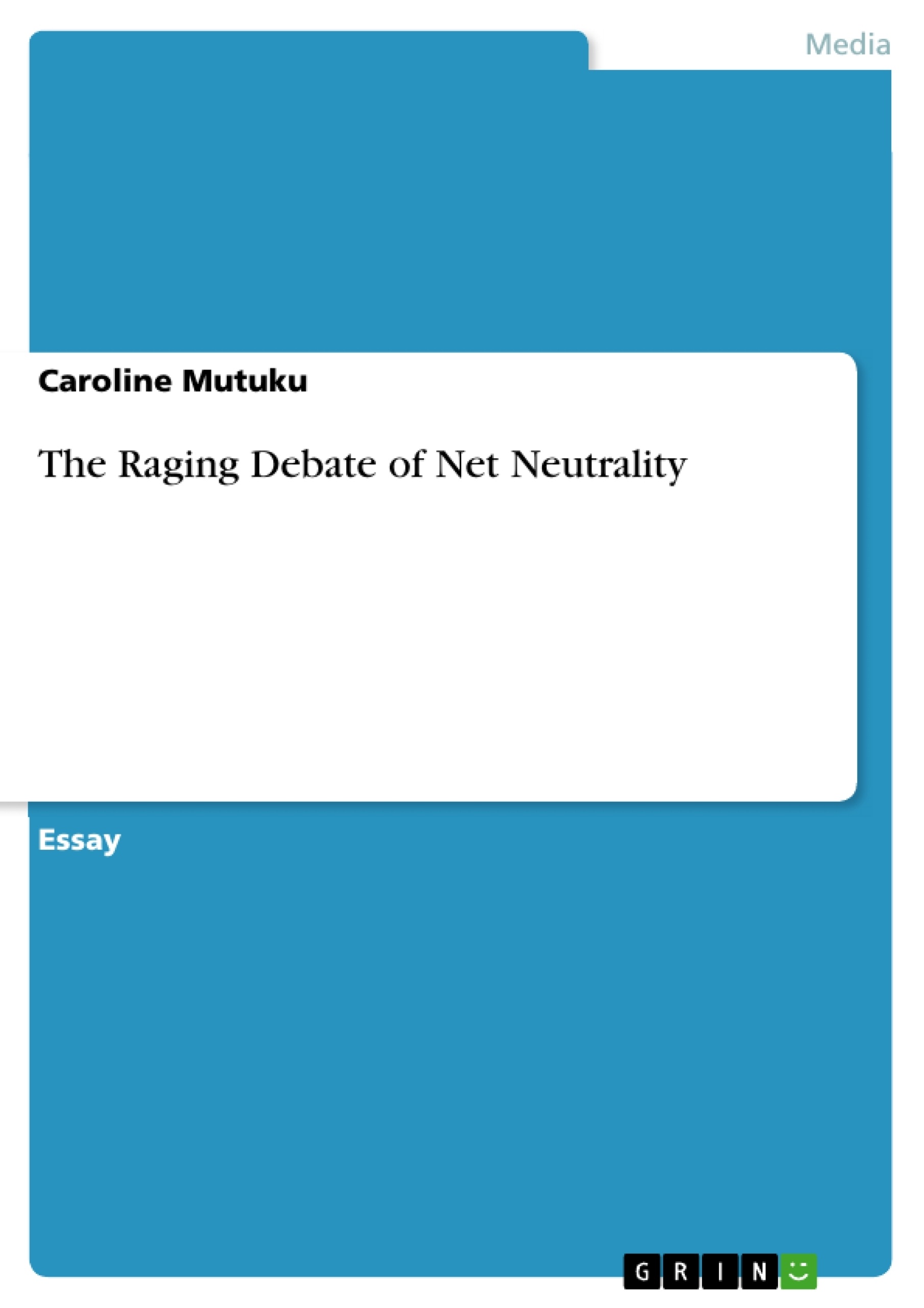The term net neutrality is elusive, partly because its meaning varies depending on the speaker and associated agenda. The general perception of the term is used to describe two distinct proposed regulation related to broadband Internet providers. One proposal suggests that regulators would and enforce some regulations that would determine acceptable network management practices, as well as unacceptable degradation of disfavored internet application and antecedent content. The other argument suggest that the regulators would ban an internet access provider from signing commercial agreements with some applications and content providers in order to provide sophisticated performance enhancement technology that is essential in the support of unusually performance-sensitive contents and applications, for example, the real-time streaming of videos. The two proposals are distinct but complement each other. Most net neutrality proponents advocate the anti-blocking rule as well as close regulation of business-to-business relations between networks and content providers. These proposals are likely to be the focus of telecommunication policy for some time to come. The proposals have got the attention of Congress, who already has some bills on the topic. The President has weighed in the debate with his demand that a strong form of regulation. The papers aim to examine the anti-trust implication on net neutrality regulations.
Inhaltsverzeichnis (Table of Contents)
- Introduction
- The Taxonomy of Internet Protocol Networks
- The Anti-Blocking Principle
- Support for Net Neutrality
- Opposition to Net Neutrality Policies
- The Antitrust Underpinning of the Debate
Zielsetzung und Themenschwerpunkte (Objectives and Key Themes)
The main objective of this paper is to examine the antitrust implications of net neutrality regulations. It analyzes the arguments for and against the proposal and its potential effects on the internet ecosystem. The paper also seeks to understand the underlying principles behind the debate, exploring the roles of open architecture, market power, and consumer choice.
- The definition and evolution of net neutrality
- The impact of net neutrality on innovation, competition, and consumer choice
- The role of antitrust concerns in the net neutrality debate
- The arguments for and against net neutrality regulations
- The potential consequences of net neutrality policies on the internet industry
Zusammenfassung der Kapitel (Chapter Summaries)
- Introduction: The introduction outlines the debate surrounding net neutrality and its various interpretations. It highlights the two key proposals for regulation, focusing on anti-blocking rules and business-to-business relationships between network providers and content providers.
- The Taxonomy of Internet Protocol Networks: This chapter explores the structure of the internet as a collection of interconnected networks. It emphasizes the importance of open architecture, low barriers to entry, and the role of consumer demand in driving innovation and growth.
- The Anti-Blocking Principle: This chapter focuses on the first key proposal for net neutrality regulation – the ban on blocking or degrading access to specific internet content. It examines historical cases where broadband providers have restricted access to certain applications and content, illustrating the need for regulation.
- Support for Net Neutrality: This section highlights the arguments in favor of reclassifying broadband providers as common carriers. The proponents argue that this would prevent discrimination in service provision, ensuring equal access to the internet for all consumers.
- Opposition to Net Neutrality Policies: This chapter presents the arguments against net neutrality policies, arguing that they limit the usefulness of the internet and stifle innovation. They also express concerns about the potential for government overreach and the impact on investment.
Schlüsselwörter (Keywords)
This text explores the debate surrounding net neutrality, focusing on its implications for antitrust, innovation, and competition in the internet ecosystem. Key terms and concepts include: broadband providers, common carriers, anti-blocking, open architecture, market power, consumer choice, and potential consequences for the internet industry.
- Quote paper
- Caroline Mutuku (Author), 2017, The Raging Debate of Net Neutrality, Munich, GRIN Verlag, https://www.grin.com/document/427080




